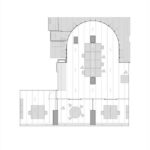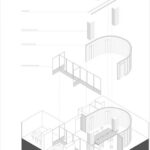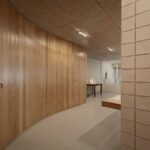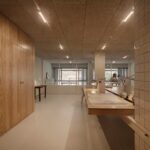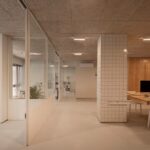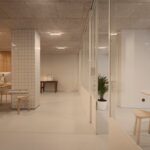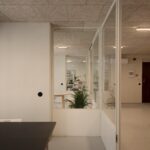Infante Santo Avenue, nestled on the periphery of Lisbon’s historical city center, serves as a vital link between the majestic Necessidades Palace and the picturesque banks of the Tagus River. This thoroughfare, conceived as part of the 1949 Lisbon Master Plan, embodies a fusion of historical significance and modern urban design principles, shaping the city’s landscape for decades to come.
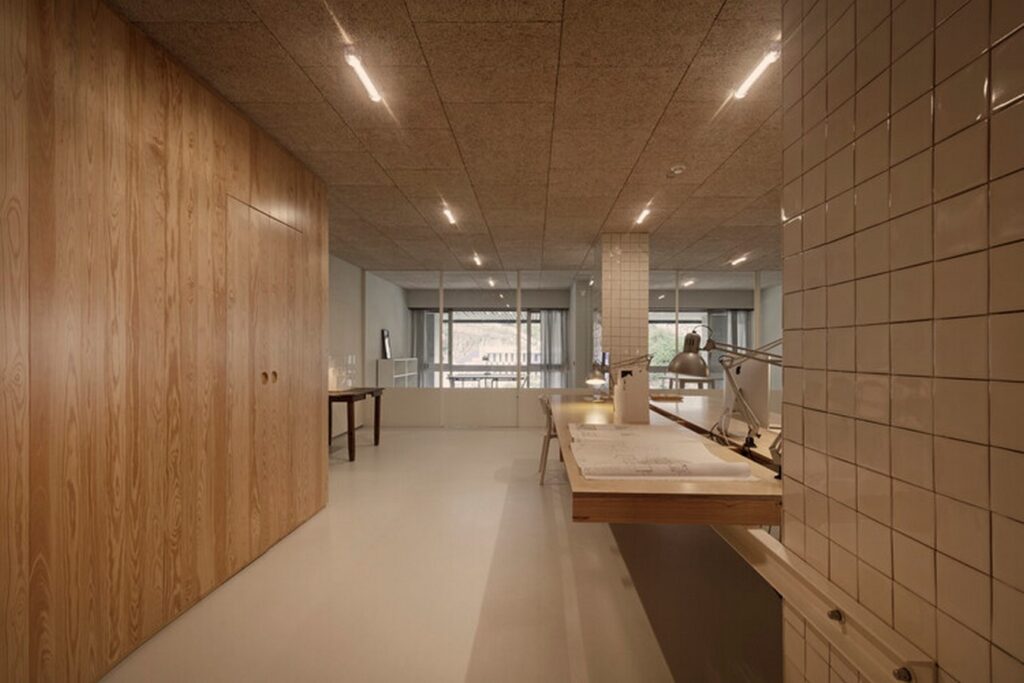
Historical Context
Designed under the guidance of urbanist Étienne de Gröer, Infante Santo Avenue emerged as a circular road, traversing the undulating terrain and reshaping the existing urban fabric. Its construction, marked by the demolition of the eighteenth-century aqueduct arches, paved the way for pioneering architectural experiments that defined Lisbon’s post-war architectural identity.
Integration into Modernity
D-A Studio, nestled within a multifunctional building envisioned by architects Miguel Pestana and Nuno Vieira da Fonseca in 1964, epitomizes the avenue’s embrace of modernity. Situated on the ground level of the building, the studio seamlessly integrates with its surroundings, offering a unique perspective framed by expansive glass windows and a double-height arcade.
Architectural Features
The studio’s interior design capitalizes on its architectural context, with a sequence of three-room offices positioned along the windows to maximize natural light penetration. Steel frame panels and glass partitions ensure transparency while delineating functional zones within the space. A curved wood wall, reminiscent of an apse, conceals essential amenities, adding a touch of architectural intrigue.
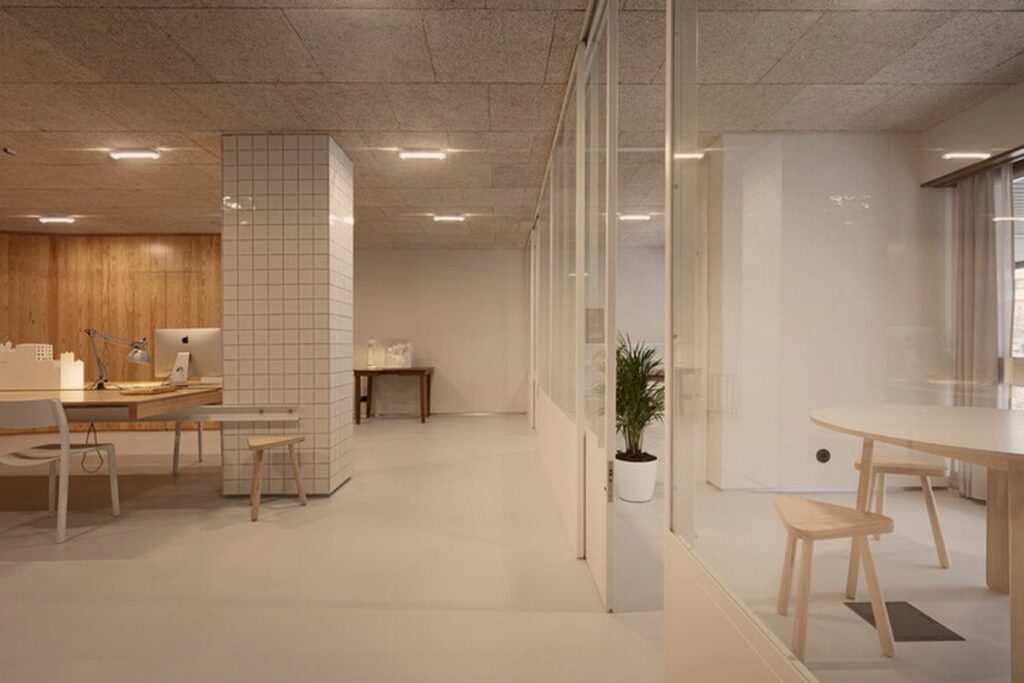
Design Harmony
The studio’s aesthetic harmony is further accentuated by thoughtful material choices, such as tiled pillar surfaces that reflect light and a large concrete working table supported by the building’s structure. The interplay between cool tiles and warm wood elements creates a dynamic spatial ambiance, enhancing the overall sensory experience.
Illuminating the Night
As daylight fades, the studio undergoes a transformation, illuminated by electric LED lights that cast a captivating glow onto the avenue. This nocturnal spectacle, akin to an x-ray effect, invites passersby to glimpse into the studio’s inner sanctum, blurring the boundaries between public thoroughfare and private workspace.
Conclusion
D-A Studio on Infante Santo Avenue stands as a testament to the intersection of architectural innovation and urban evolution. Anchored in historical legacy yet embracing contemporary design principles, this studio epitomizes Lisbon’s enduring spirit of creativity and reinvention in the heart of its urban landscape.



